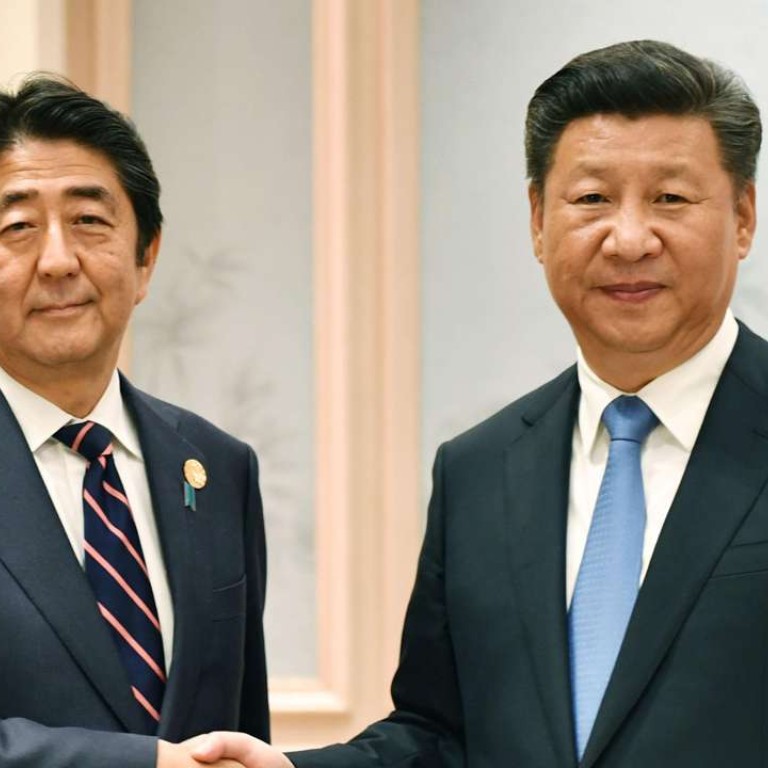
Xi Jinping tells Japanese PM Shinzo Abe that it’s time to move forward
Long-awaited meeting at summit should cool Sino-Japanese tensions in the short term, analysts say
President Xi Jinping told Japanese Prime Minister Shinzo Abe on Monday that China and Japan should “put aside disruptions” to make their bilateral ties back to normal track.
The two leaders are having their first one-on-one talk in 17 months on the sidelines of G20 summit on Monday evening, amid rising tension over the territorial disputes.
Both nations agreed to step up dialogues on all levels, and build communication mechanism in air and sea between their militaries, Abe said after the talks.
“I made our position very clear on the East and South China Sea issues to President Xi,” he said. “For East China Sea, we should strengthen dialogue and consultation to maintain the stabiity and make it a sea of peace, friendship and cooperation.”
But Abe said he will discuss with Southeast Asian nations on applying rule of law on the South China Sea - a move which will dismay Beijing.
In the meeting, Xi said the two nations should propel their relations back on the track of normal development as soon as possible, Xinhua reported.
Relations between the two sides are having turbulences, and at the stage that risks deterioration if not on an improving track.
“Both sides should be more responsible and alerted to build on positive momentum and remove negative factors,” he said, adding that Japan has to be cautious in the South China Sea disputes.
Maritime disputes in the East and South China Seas and wartime history are among the key differences for the nations to address, and North Korea’s launch of three ballistic missiles towards Japan on Monday is also mentioned in their talks.
The previous two meetings between the two leaders were also on the sideline of multilateral events, one at an APEC meeting in November 2014 and the other at an Asia-Africa summit in April 2015.
Abe also met Chinese Premier Li Keqiang at similar occasions, but the leaders of the world’s number two and number three economies have not officially visited each other since 2011.
In recent months, Tokyo has strongly criticised Beijing’s assertive activities in the South China Sea and the coastguards of both countries had a confrontation in the waters near the Diaoyus last month.
The Japanese, however, have been actively seeking a meeting between their leaders. Last week, Abe sent Shotaro Yachi to Beijing as his representative .
The meeting will relieve the current tension , experts said, but how much it will aid the relationship is questionable.
The competition and differences between the two cannot be solved by one short meeting, but “through a face to face talk Abe may get a better idea how firmly China stands on the core interests and accordingly adjusts his policies”, said Jiang Yuechun, a former diplomat to Japan and now a researcher at the China Institute of International Studies.
“With great expectation comes great disappointment,” said Liu Jiangyong, a professor who specialises in Japanese studies at Tsinghua University.
Previous meetings with Abe were often followed by a visit to the Yasukuni shrine or a standoff near the Diaoyus, Liu said.
“It looks like the Japanese side only wants the meeting itself, for the meeting’s sake, not an actual improvement of the relationship,” Liu said.
The East Asia Summit in Laos, which opens on Tuesday, will be a chance to examine the relationship, as both Li and Abe will attend.
“We can wait and see if Abe raises the South China Sea issue and tries to turn the ASEAN countries against China, as the Japanese government has been doing a lot,” Liu said.

